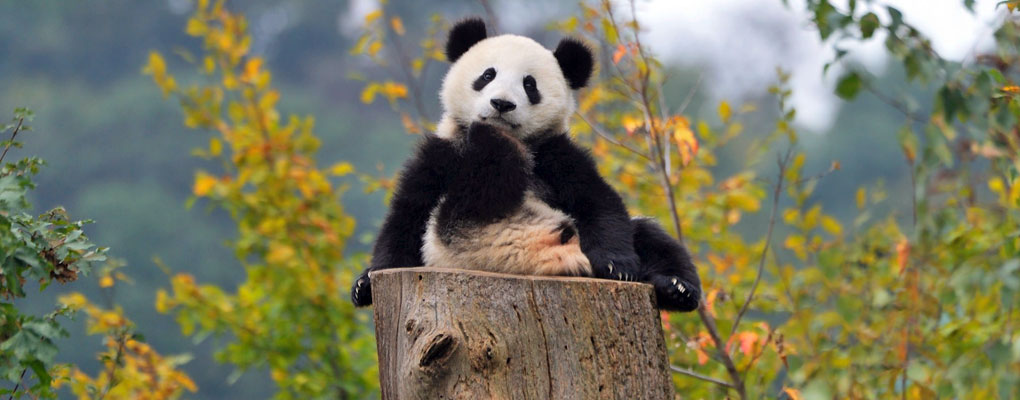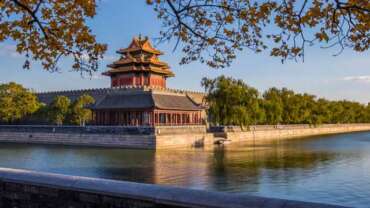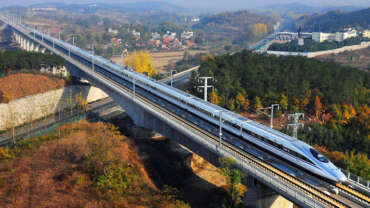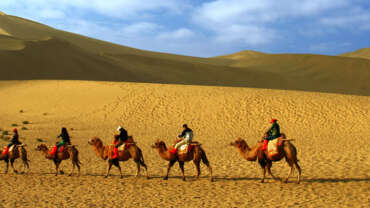Giant Panda of China
The giant panda(Ailuropoda melanoleuca; Chinese: dà xióng māo)also known as panda bear or simply panda, is a bear native to south central China.
The giant panda is one of the cutest animals in the world with two large, distinctive black patches around its eyes, and its round face and chubby body. It can be 1.2-1.8 meters in body length, 10-12 cm in tail length and 80-120 kg in weight and even weigh to 180 kg. Though it belongs to the order Carnivora with sharp paws, the giant panda’s diet is over 99% bamboo. The lifespan of pandas in the wild is between 18 to 20 years old, but can be over 30 in captivity.
The giant panda has been living on earth for at least eight million years and is known as the “living fossil” and the “national treasure of China”. The panda diplomacy has made an indelible contribution to the development of foreign friendly relations. It is also the image ambassador of World Wildlife Fund. A 2013 report stated that the wild giant panda population had increased to 1,864 by the end of 2013. By the end of 2015, there were 422 captive panda populations in China.
The giant panda is a unique species of China, and its main existing habitats are Sichuan, Shaanxi and the mountains of Gansu.
Giant Panda Facts
The giant panda (scientific name: Ailuropoda melanoleuca; Chinese: dà xióng māo) also known as panda bear or simply panda, is a kind of mammal which belongs to ursidae, carnivora. The panda is a unique species of China, and its main existing habitats is the mountainous area around the Sichuan Basin in the Midwest of China and the Qinling area in southern Shaanxi. According to the 2016 data, there are about 2060 pandas living in the wild in the world. In 2016, the International Union for Conservation of Nature (IUCN) reclassified the species from “endangered” to “vulnerable”.
The giant panda’s black-and-white fur and cuddly appearance have endeared him to the world and have a large number of fans around the world. The giant panda has become the most important symbol of the protection of endangered species since the World Wildlife Fund used it as its emblem in 1961. Not only that, the giant panda is also an important representative of China’s friendship in diplomatic activities.
Morphological Feature
What does a giant panda look like? It has a very cute appearance. Its head to body length is 12 to 18 meters, and the tail is 10 to 12 centimeters long and weighs 80 to 120 kilograms. It can even weigh up to 180 kilograms. Captive pandas are slightly heavier than wild ones, and males weigh slightly more than females.
The black and white fur on panda’s head and body is good for it hiding in trees and snow and not easily detected by predators. They have relatively sharp claws and powerful forelimbs, which are good for giant pandas to climb tall trees. Giant pandas have very thick skin to protect them from cold. The average thickness of the skin is about 5 mm, and can reach to 10 mm.
Giant pandas have very poor vision. But they can still move freely when night falls, because its pupils are split like cats.
Habit and Habitat
Giant pandas prefer to live alone and each giant panda has a separate area of activity. Apart from estrus, they often live alone. The area of the panda’s nest is about 3.9 to 6.4 km². The male’s nest area is slightly larger than the female’s. There is an overlap between the individual nests, but there is no overlap between the females.
Most wild pandas live in thick bamboo forests whose sea level is 2600-3500 meters, where the air is rarefied with cloud and mist curling up all the year round. Some other factors also affect the distribution and density of pandas in the wild: the distribution of bamboo, topography and water, whether there are hiding places and the nests for panda cubs and the mountain potential. However, human disturbance is the main factor affecting the distribution of giant pandas nowdays.
The giant panda has the character of not being afraid of cold and wet and never hibernate. Even the temperature is 4-14 ℃ below zero, they still cross bamboo groves covered by snow.
Diet
What do giant pandas eat? Pandas, like other bears, are omnivorous who are in the transition from carnivores to herbivores. Captive pandas’ main food is bamboo, radish and steamed corn bread while wild panda will also eat grass, wild fruit, insects, bamboo rat or even sheep. The average giant panda eats as much as 9 to 14 kg of bamboo shoots a day to compensate for the limited energy content of its diet.







